Table of Contents
Thermal Maturity and Microfossils
Often combined with a technique called “Vitrinite Reflectance”, reflectance and other secondary (i.e. imparted) characteristics of microfossils can be utilised as guides to thermal maturity and hydrocarbon generation. Many fossil groups will show, for example, changes in preservational colour with increasing depth of burial/thermal maturity. Sometimes this directly affects the biological material of the fossil itself but sometimes the colour-change is imparted to the microfossil from changes in the surrounding sediment.

A summary of microfossil groups and their uses in maturity studies. Numbers refer to particular biological events in Earth history (after Hartkopf-Froder et al., 2015).

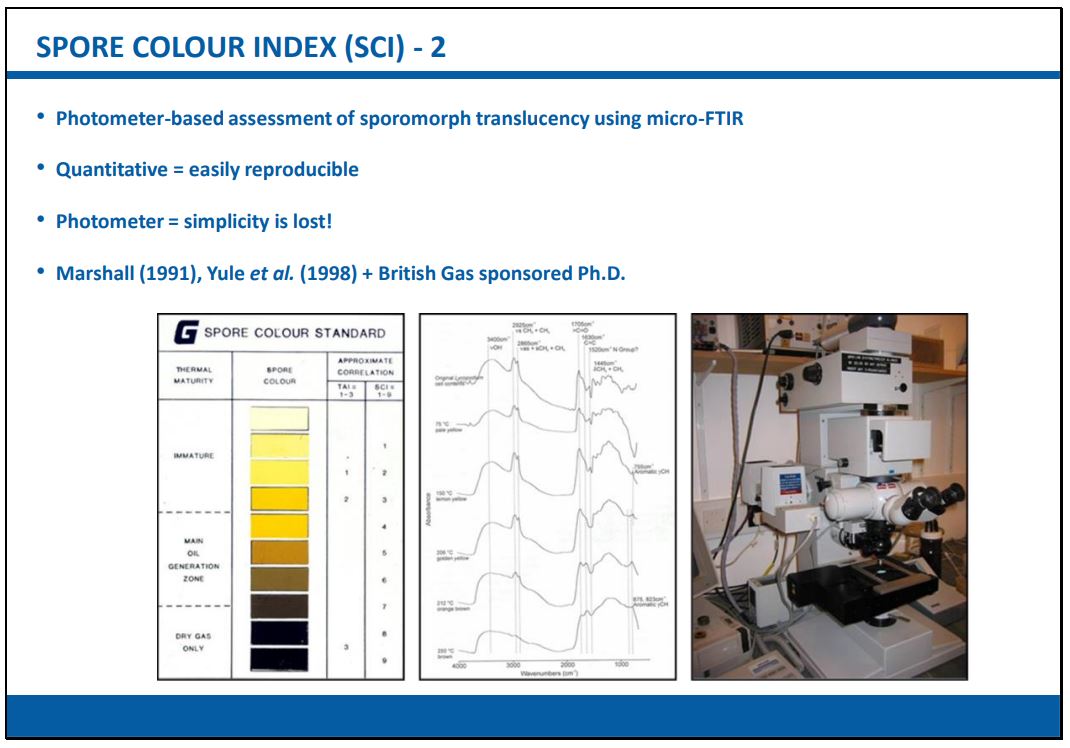
Spore Colour Index (SCI) is one of the most widely used techniques as increasing thermal maturity imparts a progressive, cumulative, irreversible colour change which can be measured objectively using photometers.
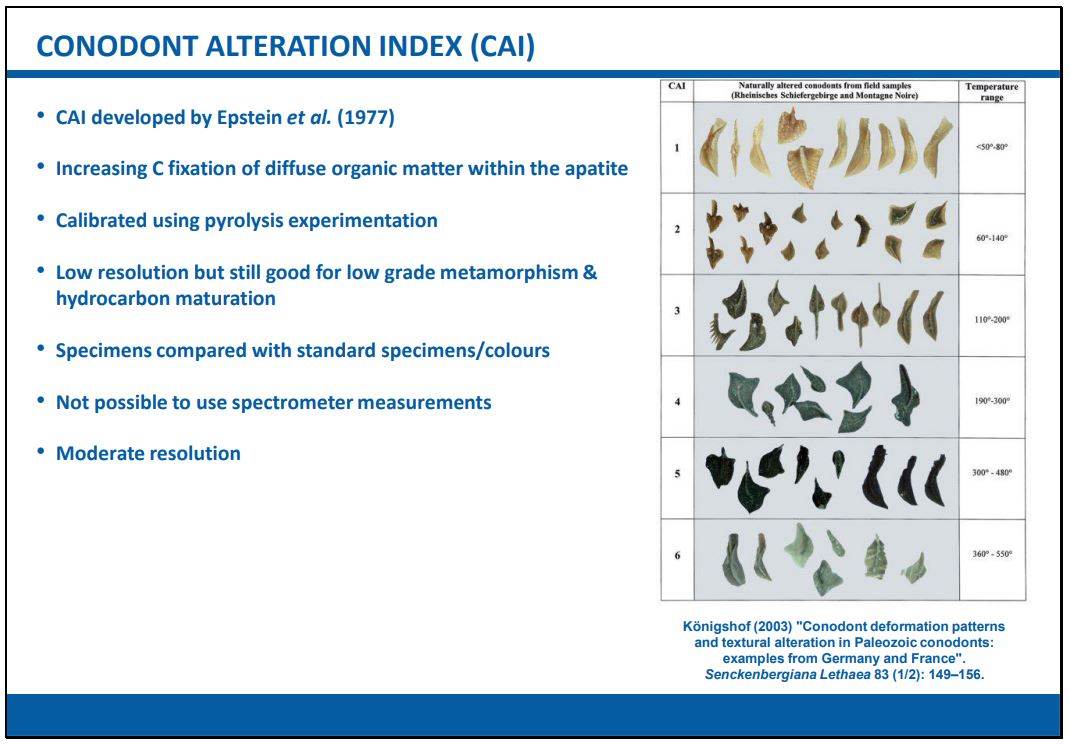
Diffused carbon within the phosphatic mineral that makes up conodont fossils becomes more fixed with increasing thermal maturity resulting in a colour change. Visual comparisons are made with standard colour charts.
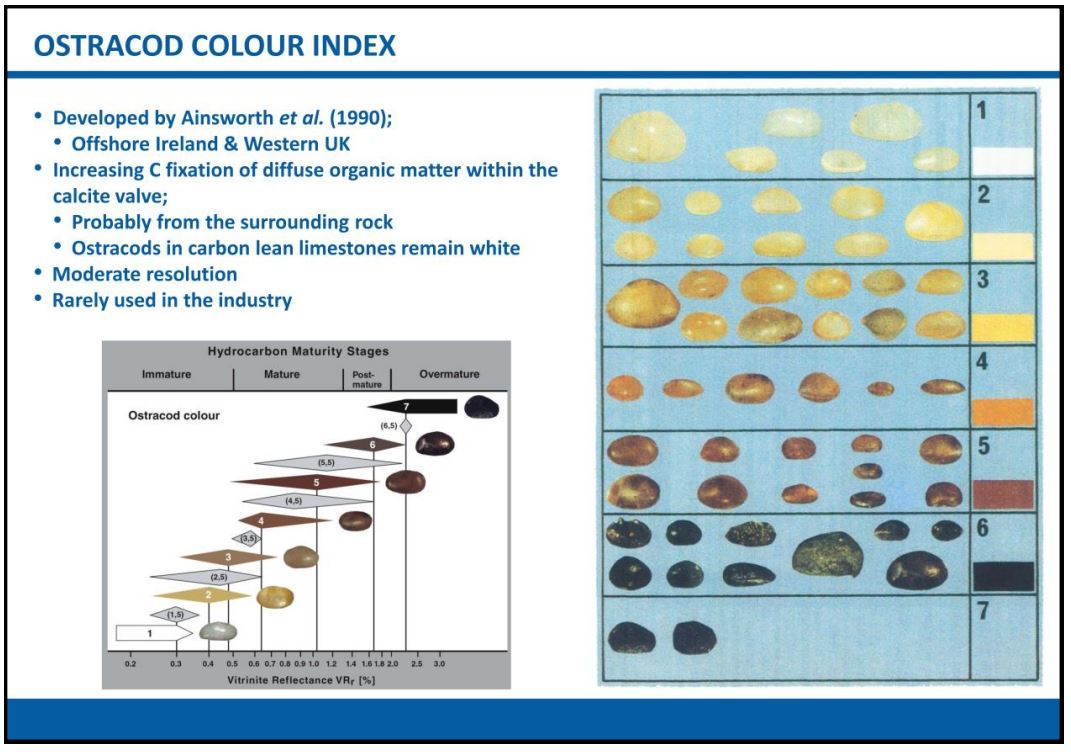
Similar fixation occurs in ostracod shells but some colour may also be imparted by the surrounding sediments.
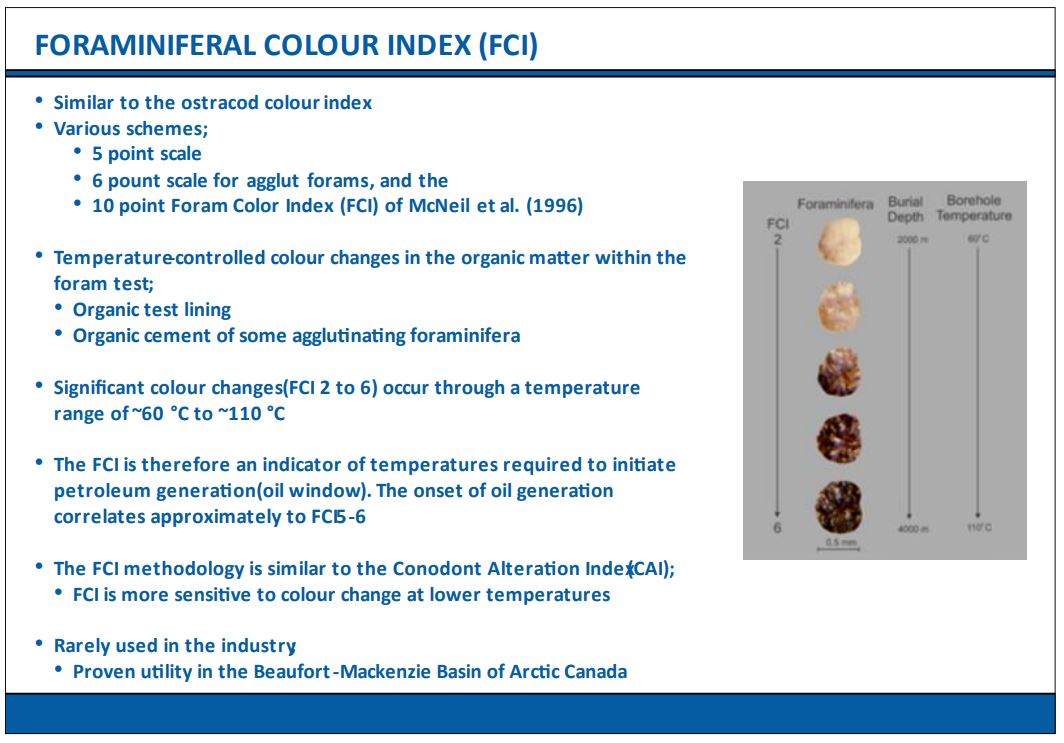

Similar fixation occurs in foram shells and is particularly sensitive to colour change at lower temperatures associated with oil generation.
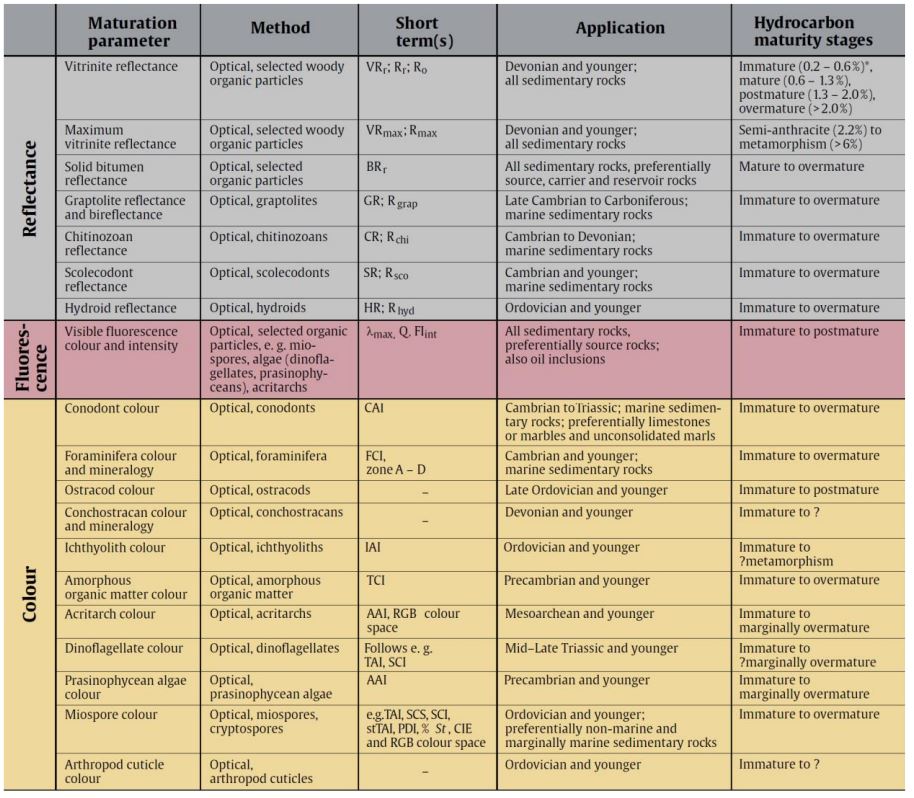
Thermal maturity parameters using vitrintie and microfossils (after Hartkopf-Froder et al., 2015)
